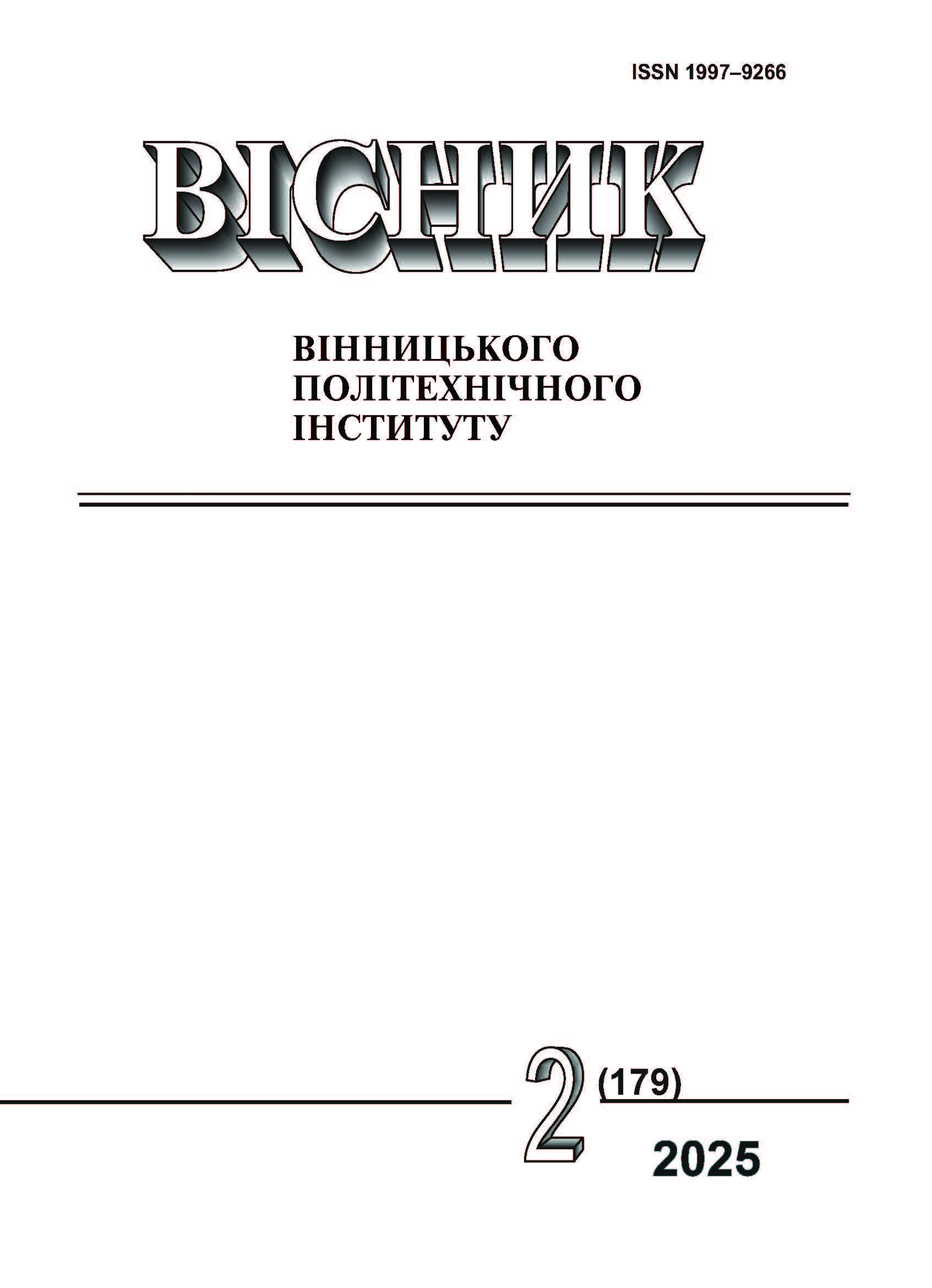ТЕХНОЛОГІЯ РОЗРОБЛЕННЯ РЕКОМЕНДАЦІЙНОГО ЧАТ-БОТА НА ОСНОВІ ВЕЛИКИХ МОВНИХ МОДЕЛЕЙ ДЛЯ ПРОЄКТУВАННЯ ІоТ-СИСТЕМИ
DOI:
https://doi.org/10.31649/1997-9266-2025-179-2-147-156Ключові слова:
Інтернет речей (IoT), великі мовні моделі (LLM), рекомендаційний чат-бот, LPWAN, проєктування систем, ІТ-інфраструктура, PFD-діаграми, інформаційна технологія, архітектура інформаційних систем, технічна підтримкаАнотація
Сучасний розвиток інформаційних технологій, зокрема Інтернету речей (IoT), відкриває нові можливості для автоматизації проєктування систем, що працюють на базі глобальних мереж малої потужності (LPWAN). Це вимагає нових підходів до створення архітектури таких систем та вибору технологічних рішень, які враховують специфіку умов їхнього використання. У дослідженні використано великі мовні моделі (LLM) для створення чат-бота, який надає рекомендації. Модель навчено на великому обсязі даних, зібраних з наукових статей і технічних документів, пов’язаних з LPWAN. Також реалізовано автоматичне створення структурованих матеріалів для проєктування, що враховують особливості таких мереж. Основні результати включають максимально деталізовані та формалізовані етапи створеної технології, яка дозволяє автоматично формувати архітектуру IoT-систем і відповідні діаграми технологічних схем (PFD-діаграми) на основі текстових описів користувачів. При цьому враховано ключові характеристики та обмеження LPWAN: низьке енергоспоживання, велика, але не безмежна, зона покриття та обмежена пропускна здатність. Це важливо для побудови ефективних і масштабованих рішень. Розроблено підхід до адаптації мовної моделі під спеціалізовану термінологію та контекст LPWAN. Охарактеризовано прийоми збільшення (аугментації) даних датасету, за рахунок використанням спеціальних бібліотек і підходів. Завдяки цьому, чат-бот може надавати точні й професійні поради, цінні для технічних спеціалістів. Наприклад, він підказує, як краще передавати дані за обмежень щодо обсягу повідомлень або частоти передачі даних. Якість відповідей на складні технічні питання значно підвищилась у порівнянні з базовими версіями моделі. Додатково створено автоматичну графічну візуалізацію потоків даних у вигляді PFD-діаграм, що полегшує розуміння структури та процесів у системі. Це сприяє кращому аналізу та ухваленню правильних рішень. Перспективи подальших досліджень передбачають удосконалення технології шляхом розширення бази знань актуальними даними та адаптації до інших IoT-протоколів для забезпечення ширшої застосовності й функціональності.
Посилання
X. Wang, H. Hu, Y. Wang, and Z. Wang, “IoT Real-Time Production Monitoring and Automated Process Transformation in Smart Manufacturing,” J. Organizational End User Comput., vol. 36, no. 1, pp. 1-25, Jan. 2024.
S. Khemakhem, and L. Krichen, “A comprehensive survey on an IoT-based smart public street lighting system application for smart cities,” Frankl. Open, p. 100142, Aug. 2024.
M. T. Kuska, M. Wahabzada, and S. Paulus, “AI for crop production – Where can large language models (LLMs) provide substantial value?” Comput. Electron. Agriculture, vol. 221, pp. 108924, June. 2024.
M. Giudici, L. Padalino, G. Paolino, I. Paratici, A. I. Pascu, and F. Garzotto, “Designing Home Automation Routines Using an LLM-Based Chatbot,” Designs, vol. 8, no. 3, pp. 43, May. 2024.
M. Giuffrè, et al., “Systematic review: The use of large language models as medical chatbots in digestive diseases,” Alimentary Pharmacol. & Therapeutics, May. 2024.
H. Vu-Ngoc, et al., “Quality of flow diagram in systematic review and/or meta-analysis,” PLOS ONE, vol. 13, no. 6, June. 2018, рр. 1-13, № e0195955.
M. Kamble, H. Patel, S. Shinde, and P. More, “Technical Review of Performance Parameters of Long-Range IoT Protocols,” Int. J. Ingenious Res., Invention Develop., vol. 4, no. 1, pp. 50-61, 2025.
J. P. Becoña, M. Grané, M. Miguez, and A. Arnaud, “LoRa, Sigfox, and NB-IoT: An Empirical Comparison for IoT LPWAN Technologies in the Agribusiness,” IEEE Embedded Syst. Lett., p. 1, 2024.
T. Kang, “Training data and fine-tuning process for developing LLM-based BIM domain knowledge model,” J. Korea Academia-Ind. cooperation Soc., vol. 25, no. 11, pp. 177-185, 2024.
“GitHub — e-p-armstrong/augmentoolkit: Convert Compute And Books Into Instruct-Tuning Datasets! Makes: QA, RP, Classifiers,” GitHub. [Electronic resource]. Available: https://github.com/e-p-armstrong/augmentoolkit .
“meta-llama/Meta-Llama-3-8B Hugging Face,” Hugging Face – The AI community building the future. [Electronic resource]. Available: https://huggingface.co/meta-llama/Meta-Llama-3-8B .
D. M. Anisuzzaman, J. G. Malins, P. A. Friedman, and Z. I. Attia, “Fine-Tuning LLMs for Specialized Use Cases,” Mayo Clinic Proc.: Digit. Health, Nov. 2024.
X. Wang, and L. Aitchison, “How to set AdamW's weight decay as you scale model and dataset size,” arXiv preprint, arXiv:2405.136982, 2025.
“GitHub — mermaid-js/mermaid: Generation of diagrams like flowcharts or sequence diagrams from text in a similar manner as markdown,” GitHub. [Electronic resource]. Available: https://github.com/mermaid-js/mermaid .
##submission.downloads##
-
pdf
Завантажень: 53
Опубліковано
Як цитувати
Номер
Розділ
Ліцензія

Ця робота ліцензується відповідно до Creative Commons Attribution 4.0 International License.
Автори, які публікуються у цьому журналі, згодні з такими умовами:
- Автори зберігають авторське право і надають журналу право першої публікації.
- Автори можуть укладати окремі, додаткові договірні угоди з неексклюзивного поширення опублікованої журналом версії статті (наприклад, розмістити її в інститутському репозиторії або опублікувати її в книзі), з визнанням її первісної публікації в цьому журналі.
- Авторам дозволяється і рекомендується розміщувати їхню роботу в Інтернеті (наприклад, в інституційних сховищах або на їхньому сайті) до і під час процесу подачі, оскільки це сприяє продуктивним обмінам, а також швидшому і ширшому цитуванню опублікованих робіт (див. вплив відкритого доступу).





